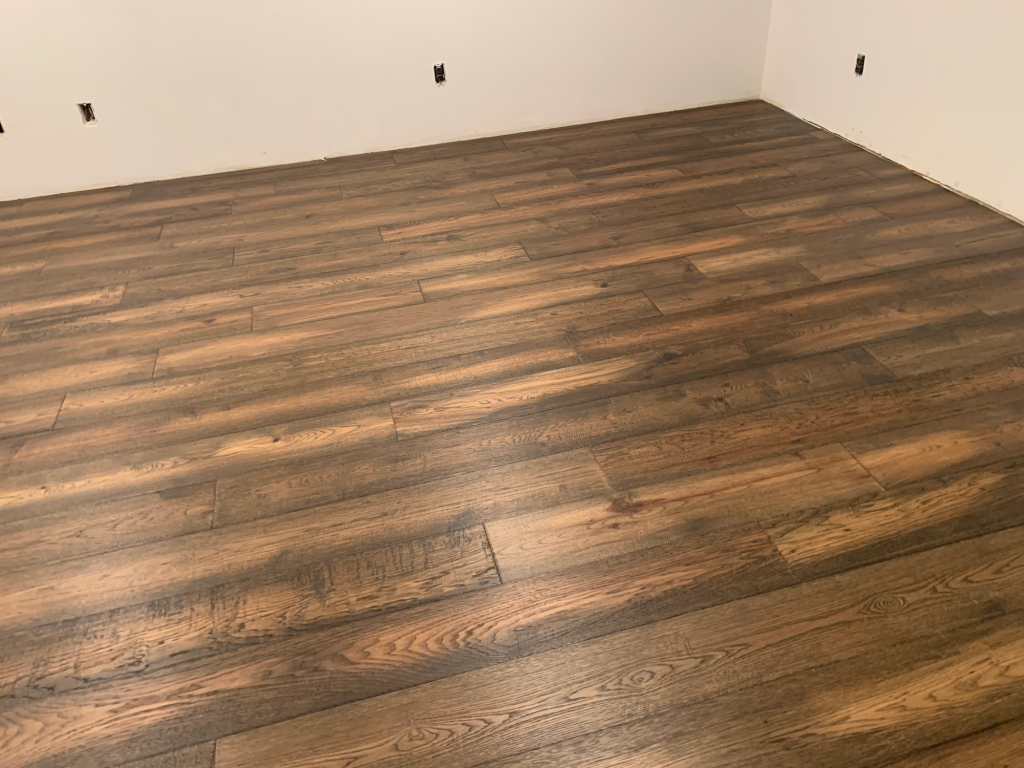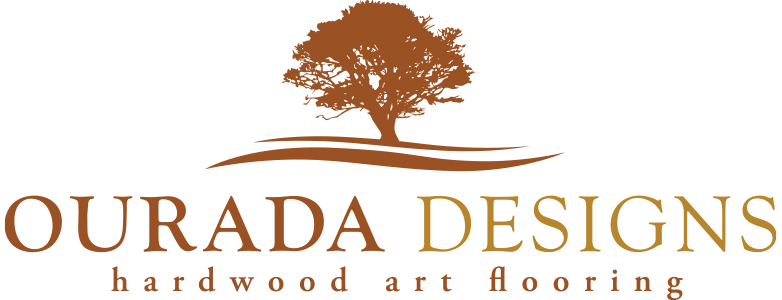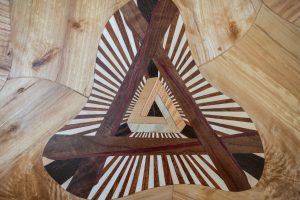As someone who specializes in custom hardwood floors, I often talk to clients about the best type of wood flooring for their home. While I’m passionate about solid hardwood and artistic, custom designs, there are certain scenarios where engineered hardwood flooring becomes the ideal choice. Let’s dig into what engineered hardwood flooring is, why I use it, and when it might be the right option for your space.

What Exactly Is Engineered Hardwood Flooring?
At its core, engineered hardwood flooring consists of multiple layers, typically a plywood or high-density fiberboard base, which I would not use or recommend, topped with a real hardwood veneer. Unlike solid hardwood, which is one solid piece of wood, engineered flooring layers are stacked with grain directions alternating. This construction significantly improves stability and reduces the natural tendency of wood to expand and contract with humidity changes.
Why Choose Engineered Hardwood
The primary advantage of engineered hardwood flooring is stability. Traditional solid hardwood floors can experience issues like cupping, warping, and gaps when exposed to moisture or significant temperature fluctuations. Engineered hardwood floors, however, are designed specifically to resist these changes.
This makes engineered hardwood flooring especially useful in basements, below-grade installations, and directly over concrete slabs—situations where moisture is a concern, and where traditional solid wood flooring would be more prone to failure.

When to Consider Using It
You should consider engineered hardwood flooring if your project involves:
- A basement or below-grade room.
- Installation directly over a concrete slab.
- Radiant heating systems require flooring to withstand thermal fluctuations.
- Wider plank styles, which are more dimensionally stable as engineered wood.
I’ve installed engineered hardwood floors in many homes precisely because of their performance in these challenging environments. Clients who want the aesthetic warmth and beauty of real hardwood, even in moisture-prone areas, find engineered hardwood an excellent solution.
Selecting Quality Materials
Choosing the right engineered hardwood flooring is essential. One of the biggest factors I stress to my clients is veneer thickness. While engineered hardwood products are often pre-finished and convenient, the thickness of the hardwood veneer varies significantly. Thin veneers limit future refinishing and sanding options.
Ideally, look for engineered floors with a veneer thickness of at least 3mm, but ideally 6mm. This thickness allows for sanding and refinishing at least once or twice over the floor’s lifespan, preserving your investment and giving you the flexibility to refresh the look of your space down the road.

Installation Considerations with Engineered Hardwood Flooring
Installing engineered hardwood flooring can be different from traditional solid wood floors. It can be nailed, glued, or installed as a floating floor, offering greater flexibility. When installing engineered hardwood in basements or directly onto concrete, my preference is typically a glue-down over a roll-on moisture barrier method to ensure stability and durability. Using adhesives designed specifically for engineered hardwood helps enhance moisture resistance and bonding strength, ensuring your flooring lasts.
Personal Experience and Recommendations
I’ve recently worked on projects like the South Hill basement, where engineered white oak flooring was installed directly onto concrete. The homeowners were thrilled to have real hardwood in their basement, something traditionally challenging with solid hardwood. Engineered flooring provided the perfect balance between aesthetic appeal and practical performance.
While solid hardwood remains my first love, engineered hardwood flooring’s versatility and resilience mean it’s often the best option for specific projects. It’s not about compromising on quality or appearance; rather, it’s about choosing the right flooring solution tailored to the particular needs of your space.
Wrapping It Up
Engineered hardwood flooring isn’t just a substitute for traditional hardwood. It’s a thoughtful solution that addresses common environmental and structural challenges, providing the beauty of real hardwood along with enhanced stability and practicality.
If you’re considering hardwood flooring for a challenging environment in your home, engineered hardwood might be exactly what you need. As always, it comes down to quality material selection, proper installation, and matching the right flooring to the right application. Engineered hardwood flooring can give you a beautiful, durable, and long-lasting floor that performs exceptionally well, even in the toughest conditions.

I recently wrote about straight-edge hardwood floors. Learn more about them here.
Over the years, my hardwood floors have won awards. You can view the latest one here.






Pingback: White Line Syndrome: Challenges in Hardwood Flooring